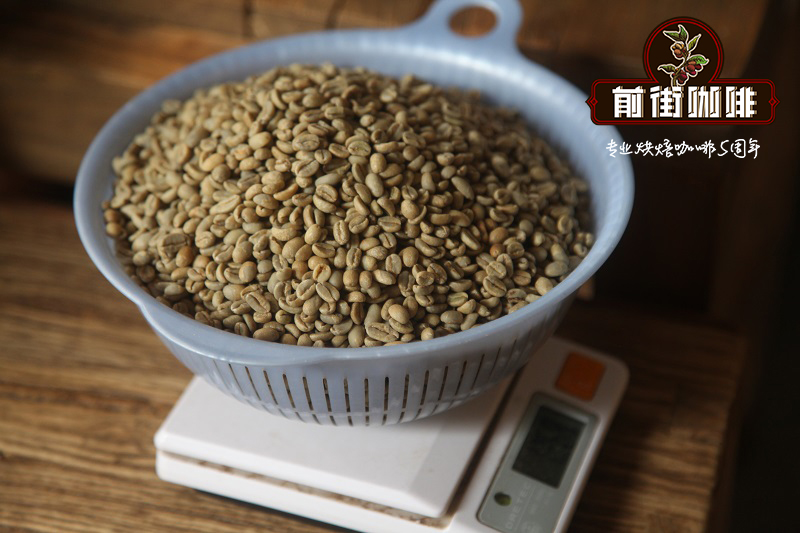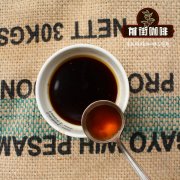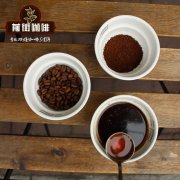The story of growing La Llama coffee farm in Bolivia? What are the growing conditions of La Llama coffee?

Professional coffee knowledge exchange more coffee bean information please follow the coffee workshop (Wechat official account cafe_style)
The story of growing La Llama coffee farm in Bolivia? What are the growing conditions of La Llama coffee?
This very special Java micro batch comes from a new farm called Finca La Llama, which was planted in 2015. This is the first year of harvest on the farm. The yield is very small but the quality is very good. It is located on a small farm covering an area of 10 hectares in & # 39 in Villa Asuncion, in a lush, steep valley outside the town of Caranavi.
La Llama is owned by Pedro Rodriguez. Over the past decade, Rodriguez has worked tirelessly to build the production and market of specialty coffee in Bolivia, helping hundreds of local farmers recognize and discover the potential of their land and crops.
Pedro Rodriguez (Pedro Rodriguez) entered the coffee industry 30 years ago, giving up his litigation and accounting work to pursue his passion for agriculture. Fifteen years ago, Pedro recognized the potential of Bolivian specialty coffee. Over the past decade, he has founded a visionary company called Agricafe, which is committed to building long-term relationships with producers on the basis of mutual trust and interests.
Agricafe has a young, energetic and passionate team, including Pedro's son Pedro Pablo and daughter Daniela, representing more than 1000 small manufacturers located in Caranavi province and beyond South Yungas. Many Caranavi-based producers send their whole cherries to Buena Vista Mill in Agricafe, Caranavi. This well-designed factory handled many batches and can be traced back to individual farmers or colonies.
In the past five years, many producers working with Agricafe have stopped producing coffee (many farmers have switched to the coca drug trade-which provides them with higher annual incomes), and another decline in the production of those still in the coffee game (due to rusty leaves and simple farming methods) has more than halved national coffee production.
In 2012, Pedro Rodriguez invested in growing its own farms to ensure supply and future business sustainability, and to show local farmers what can be achieved using modern agricultural technologies and scientific methods. Under the project called & # 39; Fincas Buena Vista & # 39; Agricafe now has 12 farms with the aim of growing about 200 hectares of coffee around them.
La Llama is the tallest of all farms, located 1650 meters above sea level. Due to the stable temperature at night and moderate temperature during the day, this high altitude helps to ensure that cherries ripen slowly. Slow ripening increases the concentration of sugar in cherries and beans, which in turn helps produce sweeter coffee. The area of La Llama is 9.58ha, of which 5.24ha is coffee. Just to reach the highest point of the farm is an experience in itself. Drive 4 × 4 on the winding road because the land rises steeply and a line passes through clean and tidy coffee.
Pedro and his family have invested a lot of time and energy in trying to make this "model" farm something that other producers in the region can learn. Coffee is carefully organized and neatly arranged by variety, making it easier to manage picking than more traditional farms in the area.
This very special location was selected on September 20, 2017 and processed at the Buena Vista Mill of the Rodriguez family on the same day. It is pulped, then fermented in water for 40 hours (during which time the water is changed once), and then cleaned and dried on a raised bed for 339 hours (14 days) in an open greenhouse with adjustable walls, which can be raised to allow for maximum ventilation. The shade of the greenhouse provides sun protection to ensure that the parchment does not break and allow the coffee to dry slowly. While drying, turn the coffee regularly to make sure it dries evenly, and carefully check for any defects (usually more obvious in wet parchment).
Bolivia has a population of about 8 million, most of whom are of mixed Spanish and American descent. The territory is mainly divided into three regions, one is the lowlands in the east, the highlands in the west and the valley in between. Bolivia has two major cities, Sucre is the official capital, and the most important political and economic city is La Paz. Wheat, potatoes, sugar cane and coffee are the main crops in Bolivia.
Bolivian coffee tree is a pure Typica tree species, and Typica coffee is famous for its clean taste. The main producing area of Bolivia is located at an average altitude of 12500 feet above sea level on the Yungas Plateau (west of the eastern slopesof Mountains to Occidental including the Caranavi area) due to the cold climate and dryness of the coffee fruit in the washing place after being fully washed and wet and then taking advantage of the special cold and dry monsoon blowing continuously to form a clean and unique taste for the fermentation and drying of the coffee.
Because of the organic cultivation, the stability of the quality is surprisingly good, especially the acceptable baking degree shows a wide variety of flavors from the city to the French deep roast. such a stable and diverse characteristic is very rare and rare, Bolivia-a good coffee worth recommending.
Qianjiesou Chong recommends:
Filter cup: Hario V60
Water temperature: 90 degrees
Degree of grinding: small Fuji degree of grinding 4
Cooking methods: the ratio of water to powder is 1:15, 15g powder, the first injection of 25g water, 25 s steaming, the second injection to 120g water cut off, waiting for the powder bed water to half and then water injection, slow water injection until 225g water, extraction time about 2:00
Analysis: using three-stage brewing to clarify the flavor of the front, middle and back of the coffee. Because V60 has many ribs and the drainage speed is fast, it can prolong the extraction time when the water is cut off.
Important Notice :
前街咖啡 FrontStreet Coffee has moved to new addredd:
FrontStreet Coffee Address: 315,Donghua East Road,GuangZhou
Tel:020 38364473
- Prev

Ethiopian coffee | what coffee beans are used for hand-made coffee? Yega-Elba Coffee Cooperative
Professional coffee knowledge exchange more coffee bean information please follow coffee workshop (Wechat official account cafe_style) Ethiopia is the country where coffee was first discovered. Today, there are still many wild coffee picked and used by farmers in the virgin forest. Ethiopia is a country with poverty, drought and civil war, but it is still the most important coffee in terms of coffee quality and output.
- Next

SAN IGNACIO Coffee Farm in Bolivia-Coffee planting Story? Bolivian coffee brewing side
Professional coffee knowledge exchange more coffee bean information please follow the coffee workshop (Wechat official account cafe_style) Bolivia SAN IGNACIO Coffee Farm-Coffee planting story? Bolivian coffee brewing method? This coffee comes from the San Ignacio region of Caranavi, where the best Bolivian coffee is grown. These coffee beans are from the AECAR Cooperative.
Related
- Detailed explanation of Jadeite planting Land in Panamanian Jadeite Manor introduction to the grading system of Jadeite competitive bidding, Red bid, Green bid and Rose Summer
- Story of Coffee planting in Brenka region of Costa Rica Stonehenge Manor anaerobic heavy honey treatment of flavor mouth
- What's on the barrel of Blue Mountain Coffee beans?
- Can American coffee also pull flowers? How to use hot American style to pull out a good-looking pattern?
- Can you make a cold extract with coffee beans? What is the right proportion for cold-extracted coffee formula?
- Indonesian PWN Gold Mandrine Coffee Origin Features Flavor How to Chong? Mandolin coffee is American.
- A brief introduction to the flavor characteristics of Brazilian yellow bourbon coffee beans
- What is the effect of different water quality on the flavor of cold-extracted coffee? What kind of water is best for brewing coffee?
- Why do you think of Rose Summer whenever you mention Panamanian coffee?
- Introduction to the characteristics of authentic blue mountain coffee bean producing areas? What is the CIB Coffee Authority in Jamaica?

